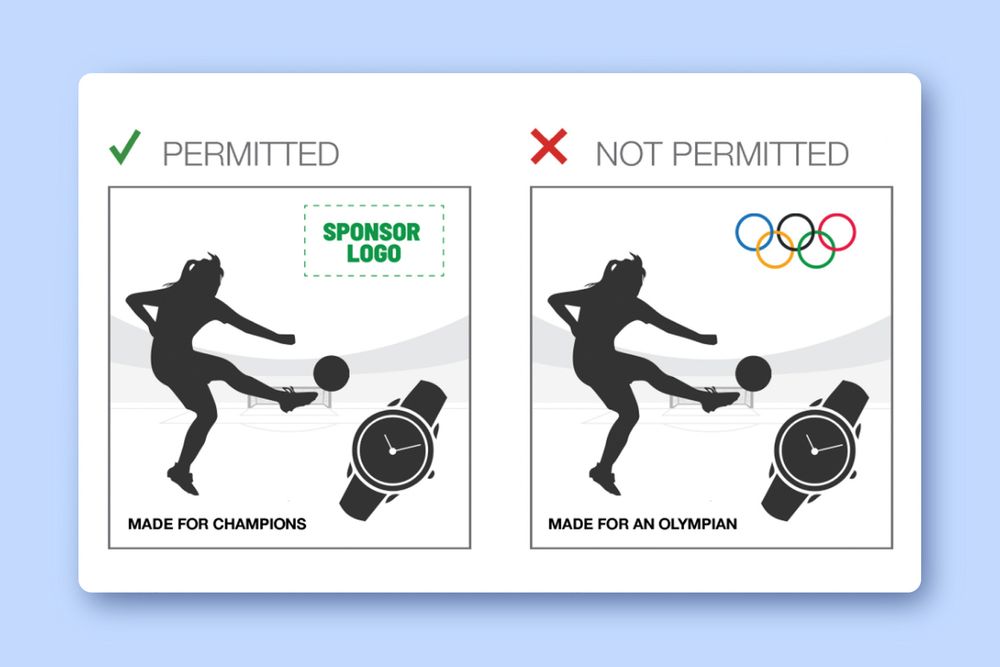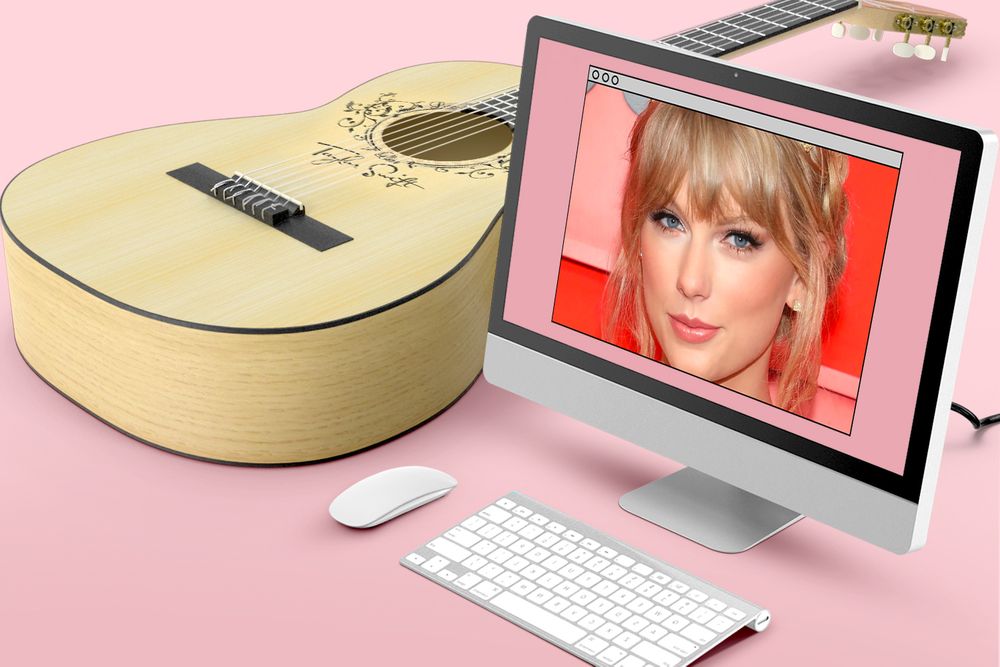|
Happy Friday. Remember to wear sunscreen this weekend, but maybe skip the Neutrogena.
In today’s edition:
- The Olympics bends the rules
- The Fleet of it all
- Souped-up Super Bowl
— Phoebe Bain, Ryan Barwick, and Minda Smiley
|
|
|
U.S. Olympic & Paralympic Committee
|
Even if they can’t afford NBC’s television inventory, companies still want to be part of The Olympics.
This year, it will be easier for them to get involved: During the 20202021 Summer Olympics, for the first time, athletes are allowed to work with brands that aren’t official sponsors of the event. You know, during those few weeks when archery is actually popular.
Explain: In 2019, the United States Olympic and Paralympic Committee (USOPC) updated its “marketing guidance”—officially known as Rule 40—which dates back to the early '90s.
- Previously, under Rule 40, Olympic athletes were largely forbidden from working with their sponsors during a blackout period that coincided with the Games, when many of these athletes are at the peak of their popularity.
-
It’s why Michael Phelps got caught in hot water in 2012 when photos of a Louis Vuitton shoot leaked during the blackout period (he didn’t lose his medals, because neither he nor the brand leaked them intentionally).
Now, USOPC is letting athletes collaborate with their sponsors during those precious few weeks.
“It affords these athletes more of an opportunity to deliver value to sponsors, if they have any,” Peter Carlisle, head of Olympics marketing for sports agency Octagon, and who represents gold medalists Simone Biles and Michael Phelps, told Marketing Brew. “Whether that will materialize for a majority of athletes? That’s questionable.”
Despite the updated guidance, there are still a slew of restrictions that athletes and their “personal sponsors,” aka companies not affiliated with the Olympics, need to watch out for between July 13 and August 10.
For instance:
- Brands and athletes can’t use the Olympic rings and/or The Games’s logos in marketing messaging. Basically, all Olympic IP is off limits.
- Athletes are allowed to thank sponsors on social media (but only seven times) + receive one “congratulatory” message per sponsor. While those messages can allude to The Olympics with hashtags like “#silver,” they can’t directly mention The Games.
Athletes can appear in “generic” advertisements—like in a magazine or on Twitter—during the duration of the event. But when we say generic, we mean generic. One rule states that, in advertising copy, “Made for Champions” should be used instead of “Made for an Olympian.”
This red tape could hinder brands from wanting to jump into the sponsorship area, depressing an athlete’s value. The new process “creates a new level of commercial control that the USOPC has over athletes' marketing opportunities and the relationships they have with their sponsorships,” Carlisle told us. “In the past, if an athlete had a sponsorship, it’s none of the USOPC’s business…with the caveat that they can't be active during the games.”
Read more here about why The Olympics set up Rule 40 in the first place + why college athletes might have an easier time with sponsorship deals than Olympians.—RB
|
|
|
|
Twitter announced Wednesday that its eight month affair with Fleets is over—and social media professionals feel like you would when your friend breaks up with a guy you not-so-secretly thought was bad for her. It’s not that they hated Fleets or anything…they just didn’t think the feature was a match for Twitter.
-
Basically an Instagram Stories clone, Fleets provided “a way for users to post text, photos and videos that vanish after 24 hours. It’s a years-old concept that has flourished on visual-focused apps like Snapchat,” per The WSJ.
- The feature will officially disappear...just like Fleets did after 24 hours…on August 3.
-
Major brands like Wendy’s and Disney experimented with the feature.
We asked a handful of multihyphenates (top social media professionals x very active Twitter users) to share their thoughts on Twitter’s brief pandemic-era fling with Fleets.
Dan Gingiss, former McDonald’s senior director of global social media: “It was simply a copycat product. We’ve seen a lot of this across social media platforms, but the whole concept of making an experience remarkable or memorable is about being different and unique. People don’t come to Twitter because they want to see Snapchat; they want Twitter to be Twitter.”
Christina Garnett, HubSpot senior marketing manager: “It was competing for real estate with Spaces. Your Fleets hold space at the top of your page, but that's also where the Spaces sessions are shown. Tweets and Spaces leverage thought over visuals and so they align better with Twitter's overall vision and use case.”
Jack Appleby, Twitch senior creative strategist: “Twitter correctly identified that tweets can feel oddly permanent, even though their half-life is quite short. It just never made much sense to introduce an entirely new format to solve that, especially one that feels like the younger, less mature brother of Instagram Stories.”—PB
|
|
|
|
You’d be surprised how many marketers don’t know the answer to that question. But like, and we’re no experts, but isn’t that the only thing you should know?
If you’re scratching your head and just throwing messages at the wall, you should probably get to know our friends at Trufan. They are audience-powered intelligence that can help brands, influencers, and agencies.
With Trufan in your corner, you’ll get research and data to help spur growth. Which, once again, is pretty much the point, yeah?
Let Trufan help you get that sweet, sweet customer opt-in data that can truly make an impact for your brand.
And wouldn’t you know, Trufan wants to get to know YOU. Just schedule a demo with them and get a free summary report.
Talk to Trufan today.
|
|
|
Giphy
|
Super Bowl commercials are shaping up to be 2022’s hottest marketing accessory. On Thursday, NBC said it’s already sold 85% of Super Bowl LVI’s inventory. And the network is charging as much as $6 million per 30-second spot, Variety reported last month—a record high.
-
Mark Marshall, NBCU’s president of advertising sales and client partnerships, told Ad Age demand is stemming from “smaller advertisers who are buying ads for the first time.”
- Lots of companies dipped their toes in the Super Bowl waters for the first time at this year’s game, especially ones that fared well during the pandemic, like DoorDash and Fiverr. Jay Pattisall, principal analyst at Forrester, told Marketing Brew that approximately 31% of the game’s ads were from first-time advertisers.
Pattisall said “new economy” brands—think Robinhood, Mercari, and other platform-based businesses—”graduated to Super Bowl ad status” when people started increasingly relying on digital (vs. IRL) services during the pandemic.
“I would anticipate the same trend of relatively smaller, platform businesses returning to or breaking into the Super Bowl in February 2022,” he told us.—MS
|
|
-
Space Jam’s release today will coincide with 200 (!) branded tie-ins.
-
Netflix fired three marketers—including CMO Bozoma Saint John—for venting about management on Slack. The company is also investing in mobile video games that will be playable on its app.
-
Amazon is offering a cut of $$ to brands whose ads send a user to its platform.
-
Olympic leadership is asking Japan’s prime minister if fans can go to the games if the Covid-19 situation improves.
|
|
SPONSORED BY MORNING CONSULT
|
|
There’s data, and then there’s intelligence. With Morning Consult, you get the latter—here’s why it’s better: Their state-of-the-art software processes and visualizes more than 7 trillion unique data points daily, powering real-time analysis and faster client deliverables than anyone else in the game. Get a better grip on what your customers want with Morning Consult here.
|
|
|
Francis Scialabba
|
There are a lot of bad marketing tips out there. These aren't those.
Need to know: Apparently a web crawler is *not* something from the sands of Tatooine. It’s actually vital to SEO marketing.
The book: Keep it short, keep it snappy. 23 simple ways to increase your Facebook engagement.
OOO: Laser tag? Making beer? Take the team out to a ball game, and other offsite ideas to get to know your coworkers.
Strategy: Looking to succeed in the B2B Marketing thing? On July 20 at 2pm ET, Salesforce and nCino CMO Jonathan Rowe will discuss the top five strategies for delivering differentiated customer experiences and driving growth. Register here.*
*This is sponsored advertising content
|
|
|
|
We’re a few days away from Marketing Brew’s The CTA event with Clinique North America's VP of Marketing, Sameer Agarwal. If you haven’t completed your (free) registration for next week’s event on Wednesday, July 21, at 11:30am ET, maybe you should? Especially if:
- You want to learn how to navigate TikTok’s algorithm.
- You want to know how paid and organic TikTok strategies work hand in hand.
RSVP right here to guarantee your spot.
|
|
|
Catch up on a few Marketing Brew stories you might have missed.
|
|
AD TECH COMPANY OR TAYLOR SWIFT SONG?
|
|
There are a lot of questionably named companies in the murky marketing universe. So here’s a new game. Two of these companies are real ad tech firms. Three are Taylor Swift song titles. Can you find them? Keep scrolling for answers.
- Deep Intent
- Epiphany
- Mirrorball
- Renegade
- Magnite
|
|
AD TECH COMPANY OR TAYLOR SWIFT SONG ANSWERS
|
|
Mirrorball and Epiphany are songs from Taylor Swift’s quarantine album, Folklore, and Renegade is her most recent work for indie collaborative side project Big Red Machine. But if you’re a Swiftie, you already knew that.
|
|
|
Written by
Minda Smiley, Phoebe Bain, and Ryan Barwick
Illustrations & graphics by
Francis Scialabba
Was this email forwarded to you? Sign up here.
|
ADVERTISE // CAREERS // SHOP // FAQ
Update your email preferences or unsubscribe here.
View our privacy policy here.
Copyright © 2021 Morning Brew. All rights reserved.
22 W 19th St, 8th Floor, New York, NY 10011
|
|












